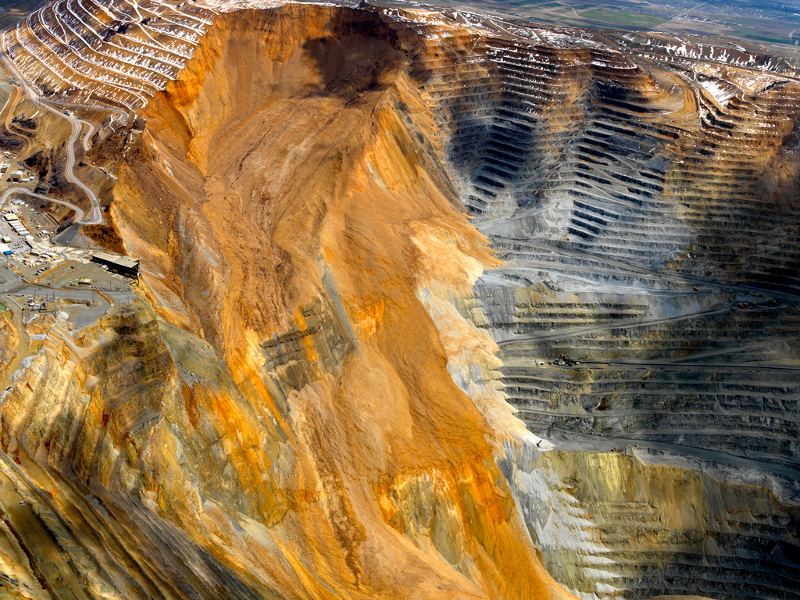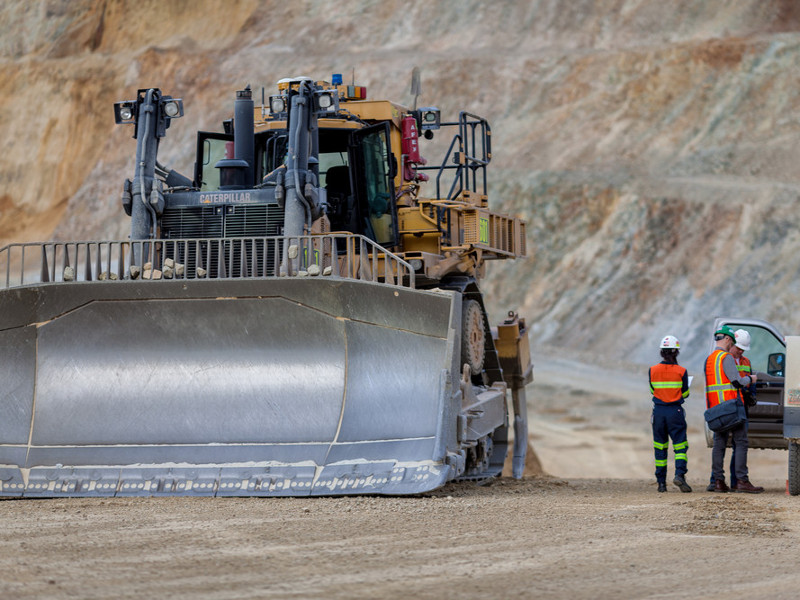Kennecott is a fully-integrated copper mining project involving the Bingham Canyon poly-metallic open-pit mine as well as associated processing facilities in Utah, US. The project is owned and operated by Kennecott Utah Copper, a wholly-owned subsidiary of Rio Tinto.
The Bingham Canyon copper mine has been in operations for more than 113 years and is currently the deepest open-pit mine in the world.
Rio Tinto purchased the Kennecott operations in 1989. It produced 335,000t of copper, 198,000 ounces (oz) of gold, 5,800 tonnes (t) of molybdenum, and 2.5 million ounces (Moz) of silver from the Kennecott project in 2018.
In December 2019, the company approved a £1.2bn ($1.5bn) investment to extend strip waste rock mining, as well as to support infrastructure development in the South Wall Pushback phase two project, which will extend the operational life of Kennecott until 2032.
Project Gallery
Kennecott copper project location, geology, and mineralisation
The Kennecott copper project is located on the eastern portion of the Oquirrh Mountains, approximately 25km south-west of the Salt Lake City, Utah, US.
The Bingham Canyon porphyry ore body forms the edge of the Bingham nappe, which is a thick stratigraphy of interbedded Paleozoic quartzites, shales, limestones, and siliceous clastics.
The Bingham Canyon porphyry deposit features sulphide mineralisation, mainly in the form of chalcopyrite, which is hosted by a complex of Tertiary intrusions of equigranular and porphyrytic stocks, dikes, and sills.
Ore reserves at Bingham Canyon mine
The proven and probable ore reserves at the Bingham Canyon mine were estimated to be 619Mt grading 0.42% copper, 0.17g/t gold, 2.04g/t silver, and 0.035% molybdenum by the end of 2018.
The poly-metallic mine was estimated to contain 2.3Mt of copper, 2.25Moz of gold, 29.2Moz of silver, and 140,000t of molybdenum in proven and probable reserves.
Mining and ore processing
Kennecott employs open-pit mining method involving drill-blast-load operations. The run-of-the-mine ore is trucked to an on-site crusher where the rock is broken down into pieces.
The crushed ore is then transported through an 8km-long conveyor belt to Copperton concentrator facility.
At the concentrator facility, the ore is ground to fine powder before passing through the froth flotation process for separating copper, gold, silver, and molybdenum minerals.
The molybdenum concentrate is filtered, dried, packaged, and shipped to roasting facilities for the production of molybdenum oxide.
The obtained copper, gold and silver concentrates are sent to the Garfield smelter facility located 27km away from the Copperton concentrator.
The concentrates are dried and sent into flash-smelting furnace to produce multiple products, including copper matte containing 70% copper. The cooled copper matte is further sent into furnaces for the removal of remaining impurities and producing copper anodes.
The anodes are sent to a nearby refinery to undergo the electrolytic process for the production of copper cathodes as well as for obtaining gold and silver electrolytic slimes.
The gold and silver slimes are sent to a precious metals plant, where gold and silver are separated, refined, dried, and melted for the production of bars.
Kennecott mine life extension
Since acquiring the Kennecott operations in 1989, Rio Tinto has invested more than £3.9bn ($5bn) towards modernisation, environmental upgrade and mine-life extension, including the recent £1.2bn ($1.5bn) investment.
The South Wall Pushback phase one project, currently under development with an estimated investment of £696m ($900m), is expected to be completed in 2021. It will extend the mine life until 2026.
The South Wall Pushback phase two project is expected to produce up to one million tonnes of refined copper between 2026 and 2032.
Power supply for Kennecott Utah Copper operation
Kennecott Utah Copper owned and operated a coal-fired power plant in Magna that earlier supplied electricity for the mine and processing operations. The power station was shut down in 2017 after being operated for 75 years.
In May 2019, Rio Tinto announced that the Kennecott operation will receive power through 1.5 million megawatt hours (MWh) of renewable energy certificates purchased from Rocky Mountain Power. It is expected to reduce the carbon footprint of the Kennecott operation by approximately 65%.



